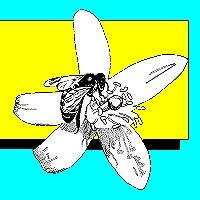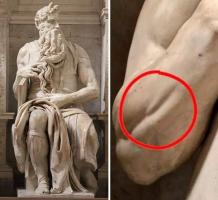APIS Volume 4, Number 12, December 1986

In this issue
- Honey Bee Technical Council Meets
- Warm Weather: Nutrition Alert!
- Africanization as Hybridization
- 1986 Index of Apis Issues
THE HONEY BEE TECHNICAL COUNCIL
Florida's new apicultural law (May 1986 APIS) provides for appointment of a Honey Bee Technical Council (HBTC). This Council has the duty to examine issues concerning apiculture and then advise the Commissioner of Agriculture and Consumer Services on making policy or exerting influence about industry issues. Members have no powers themselves, nor does the Council, but advice generated will be listened to carefully by the Commissioner. Because of this, every beekeeper should be knowledgeable about the Council and able to provide information on problems that concern apiculture. The purpose of this article is to help inform the beekeeping public about activities of the HTBC and possible actions it might take.
Periodic gatherings are open to anybody who wishes to attend, but only appointed members have a vote. On December 9, the first meeting was held at the Doyle Conner Building in Gainesville. Those appointed to the HBTC are Bill Merritt, Gary Hartland, Bill Shearman, Lawrence O'Ferrel, Horace Bell and myself as a representative of IFAS, University of Florida. Also attending on this occasion were other interested parties, including representatives from the Farm Bureau, the Commissioner's Office, The Agriculture Stabilization and Conservation Service (ASCS) and various beekeeping associations around the state. The recording secretary is Mr. Laurence Cutts, Chief Apiary Inspector for the Divison of Plant Industry.
It was a long day. Several important issues were on the agenda including: election of officers (Mr. Merritt was elected chairman; Mr. Shearman, Vice Chairman), discussion of the Council's duties, the honey loan program, new research perspectives at the University of Florida, activities of the Africanized Honey Bee Task Force and rules concerning the new bee law.
This discussion led into a description of the activities of the Africanized Honey Bee Task Force, established some time ago to begin examining potential problems that might be caused by this bee. So far the Task Force has recommended development of an information sheet (Hints for the Hive 114--Information on the Africanized Honey Bee, published by IFAS, University of Florida), placement of bait hives in port areas around the state.
[Editor's Note 5/12/1997--ENY 114 as it is called now is still available and has been updated several times. It can bee seen in print, on CD ROM and the World Wide Web. Both the Task Force and the Honey Council continue to meet.]
A WARNING ABOUT WARM WEATHER
It has been a warm fall. This can spell trouble for bees short on stores. If you're one of those beekeepers who leaves just enough food for bees to make it through the winter, (and who isn't these days?), then extra inspections to check stores may mean the difference between survival or demise of a colony.
Like any organism, bees tend to be more active in warm weather. This translates into more rapid food consumption. Although Florida doesn't have the extreme cold temperatures characteristic of more northern climes, that doesn't mean the beekeeper can be apathetic about winter loss. When all is said and done, the basic wintering axiom in the midwest applies no matter what the geographic location: "bees don't freeze to death, they starve to death."
AFRICANIZATION AS HYBRIDIZATION
How is it possible that the release of some twenty-six queens in Brazil led to an almost total replacement of European honey bees by those known as Africanized in South America? This is matter of great controversy. Authorities currently disagree on how much hybridization is occurring between African and European bees. At least one scientist prefers to call the bee "African," suggesting that it has changed little from its parental type during the last thirty years. Others believe that a process of hybridization or Africanization has resulted in a skewed distribution of bees exhibiting predominately the characteristics of the African parental type.
Africanization was discussed at length in a recent commentary by Dr. Thomas Rinderer, Honey Bee Breeding, Genetics and Physiology Lab., Baton Rouge, Louisiana in the Winter issue of the Bulletin of the Entomological Society of America. According to Dr. Rinderer, the process of Africanization requires rethinking. He takes issue with Dr. Orley Taylor's, University of Kansas, explanations: that Africanized drones fly at different times than Europeans, providing a temporal separation, and that Africanized queens fly farther when mating than do Europeans.
Dr. Rinderer instead suggests that more "asymmetrical" elements might be involved: (1) parastisim by Africanized queens of European colonies (where colonies are literally "invaded" by Africanized queens), (2) parasitism by Africanized drones of European colonies (Africanized drones are well accepted into European colonies but the reverse is not true), and (3) differential drone production (Africanized colonies produce more drones than do European colonies). Then he adds another assumption, that circumstances would in fact favor a longer mating flight by drones than queens, and that Africanized queens make shorter mating flights than European queens. Thus European queens from an apiary would tend to mate with feral or Africanized drones and the European drones from the apiary would fly so far away, their genes would be lost to that particular location.
All this adds up to a great many questions with few answers. Dr. Rinderer says much more experimental work is required in order to understand the Africanization process so it might be controlled. This includes study on: overwintering attributes of Africanized bees and basic comparative reproductive biology investigations. In addition, the possible introduction of other bee species (Apis mellifera monticola has been suggested) should be investigated because, according to Dr. Rinderer, "...we are facing problems caused by stock from one of the worst of the African subspecies. We might be better able to control Africanization by using stock from the best of the African subspecies."
1986 YEAR IN REVIEW
It will soon be four full years that this newsletter has been published under its present name on a monthly basis. Before that, it was titled "Hum of the Hive," and published irregularly over the last three decades by a succession of authors.
In retrospect, such a publication record makes this newsletter one of the most enduring dedicated to apicultural topics of any that I know about.
The following is the index to volume 4 (1986):
- January -- Report on the world honey crop (exports and imports).
- February -- Liability Insurance: How Much is Enough?
- March -- Survey of the List; Use the Guestbook Option: How to Subscribe.
- April -- Priorities in Beekeeping, Honey as a Remedy, Rooting Out Old Comb, Honey Bees and Citrus Relationship.
- May -- Lovebugs and Palmetto Blooms, What Makes Better Beekeepers, Dry Times--Providing Water, House Bill 928 (New Bee Law), More on Liability Insurance.
- June -- Florida Citrus Honey: Is it Unique (adulteration issue), Analyzing pesticide kills (chronic low dosages: Temik® and dimethoate).
- July -- Honey Promotion Referendum Passes; National Honey Board Formed, Long Range Planning for Cooperative Extension, Can We Compete (on world market).
- August -- Florida Bee Botany (new publication), Stress on Bee Colonies.
- September -- Calibrating Refractometers: Calculating Moisture Level in Honey, On Profitability (new publication), Beekeeping on the Apalachicola, Wood Preservatives.
- October -- Brazilian Pepper and Melaleuca Control, Marketing: Key to Profitability in the 1980s, Bees That Glow in the Dark (Chernobyl fallout).
- November -- The Competition (news about sugar research and health), More on Wood Preservatives, News From New Zealand.
- December -- The Honey Bee Technical Council, Warning about Warm Weather, On Africanization and Hybridization, the 1986 Index..
Sincerely,
Malcolm T. Sanford
Bldg 970, Box 110620
University of Florida
Gainesville, FL 32611-0620
Phone (352) 392-1801, Ext. 143 FAX: (352)-392-0190
http://www.ifas.ufl.edu/~mts/apishtm/apis.htm
INTERNET Address: MTS@GNV.IFAS.UFL.EDU
©1986 M.T. Sanford "All Rights Reserved

















